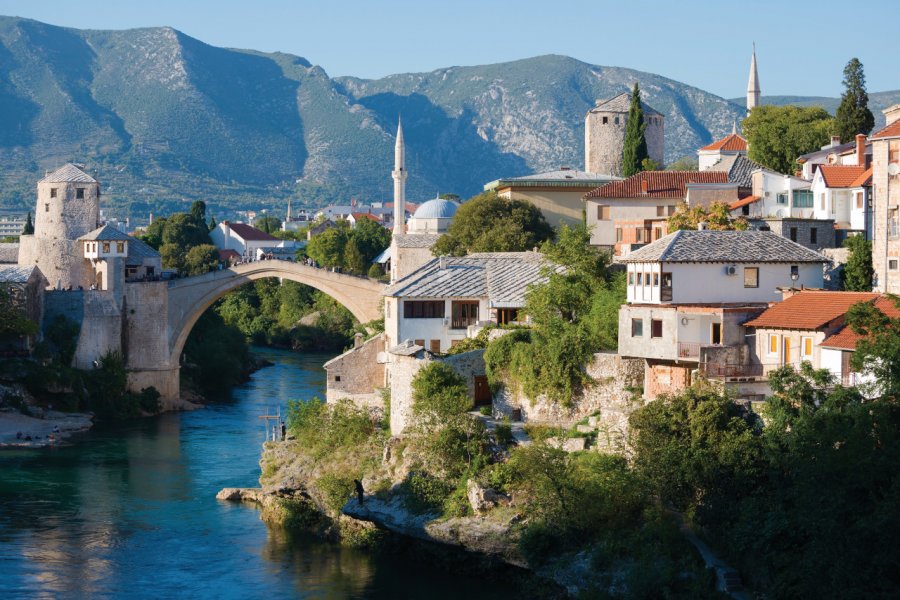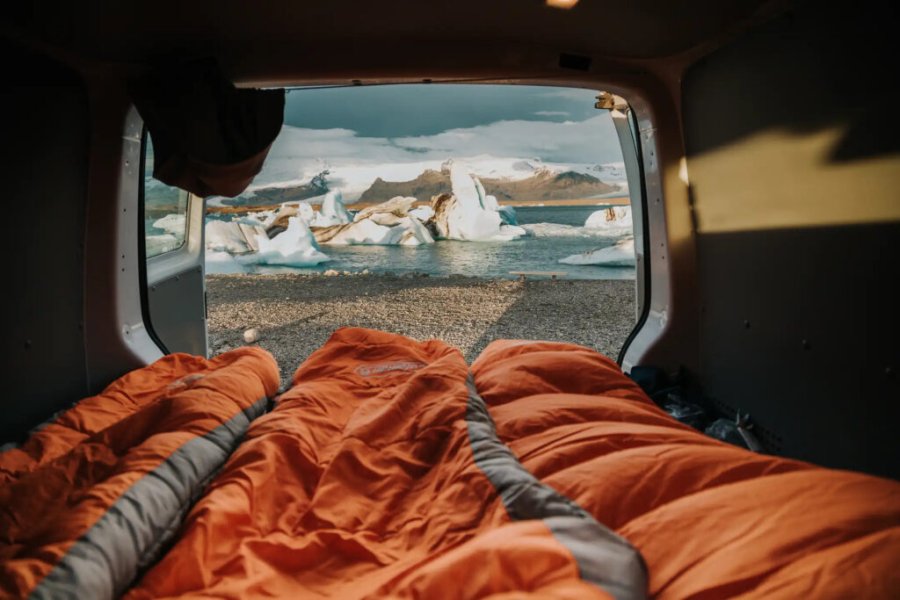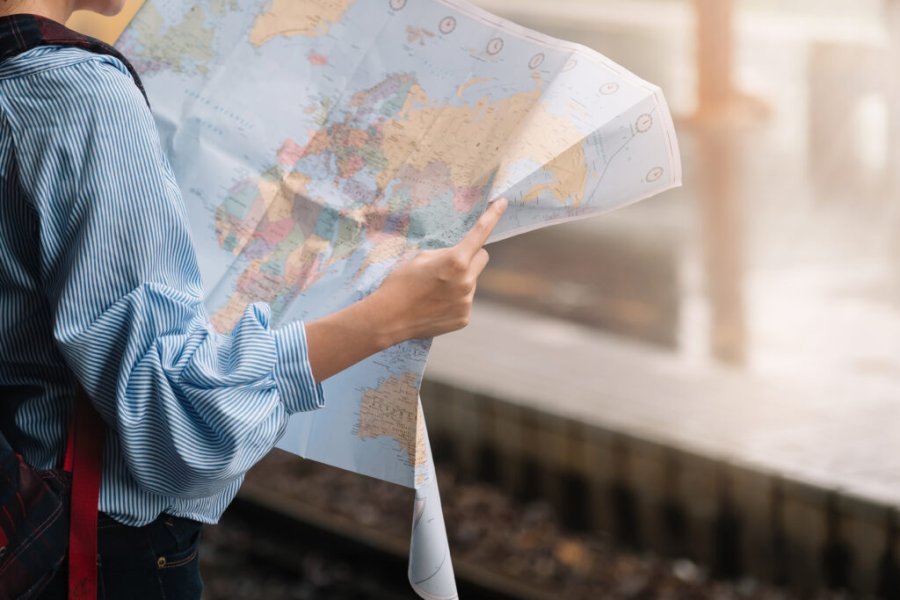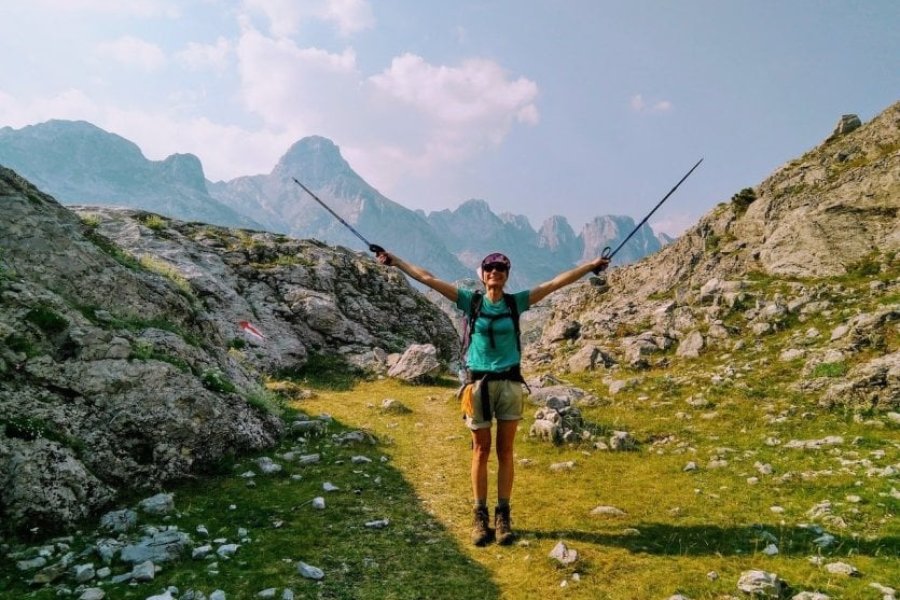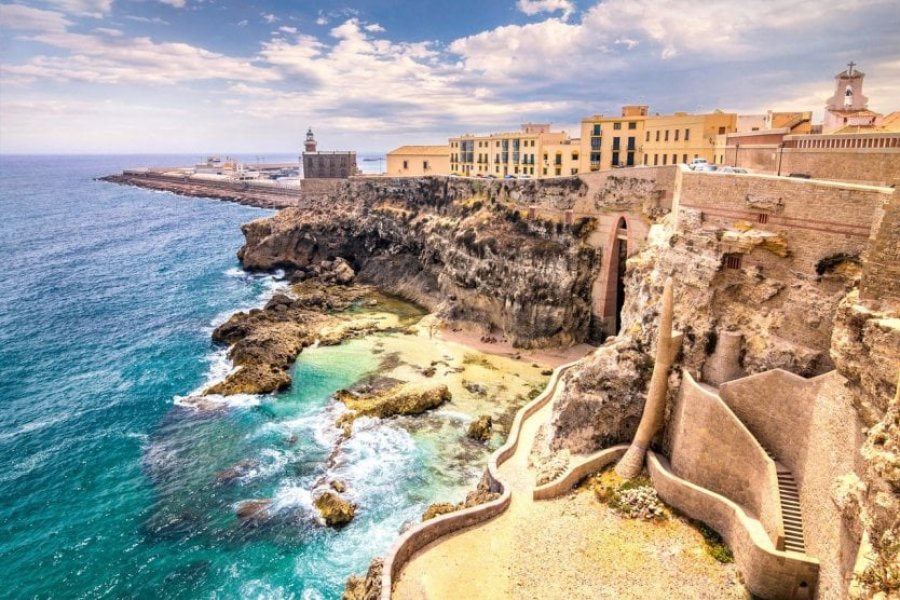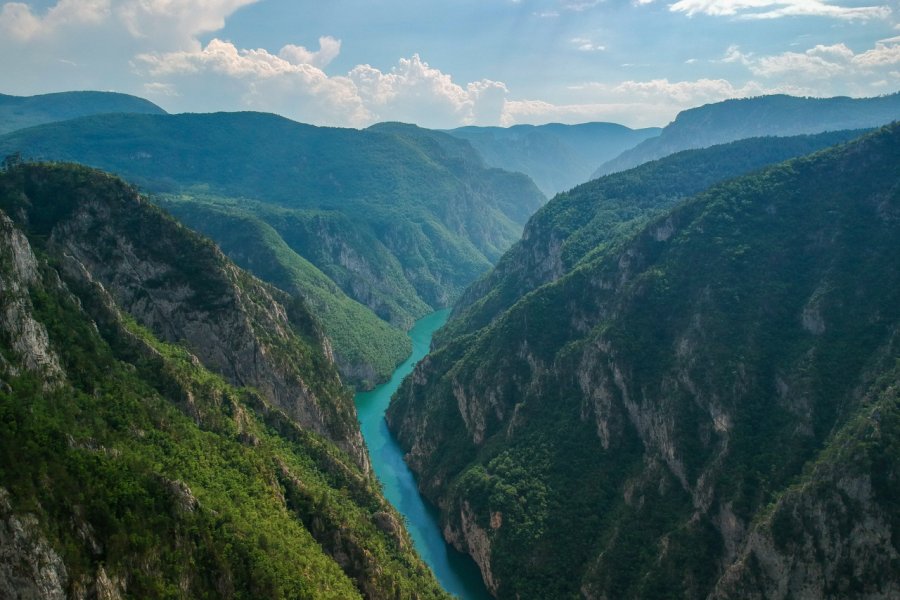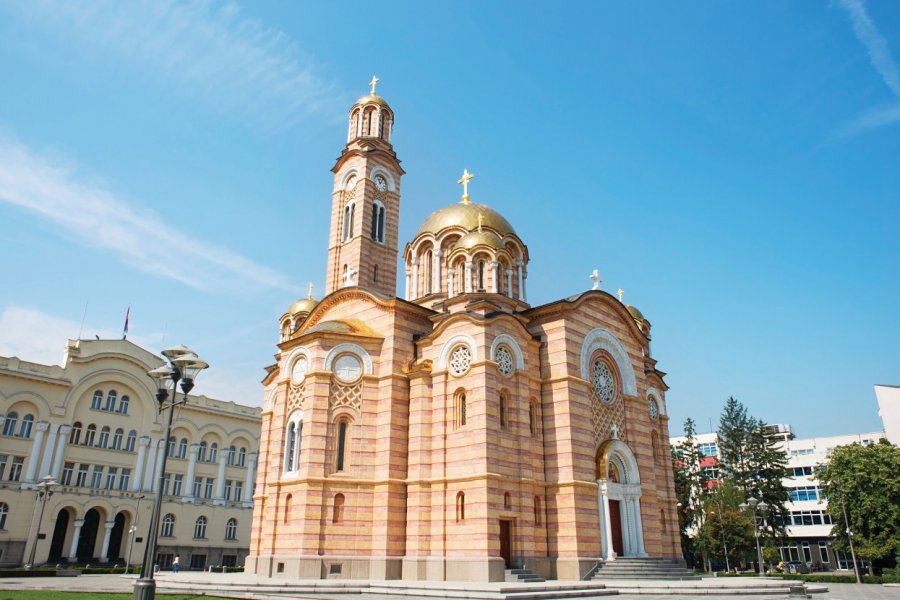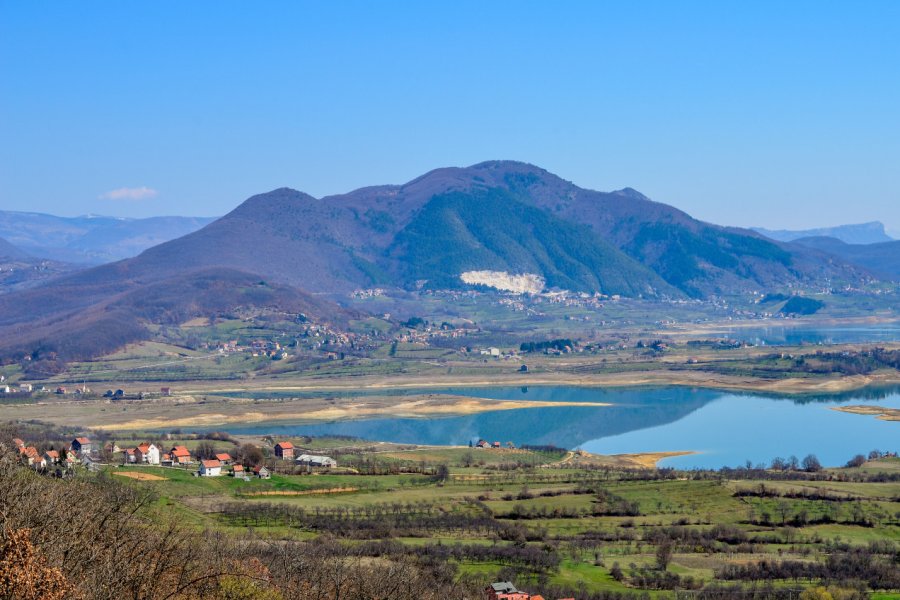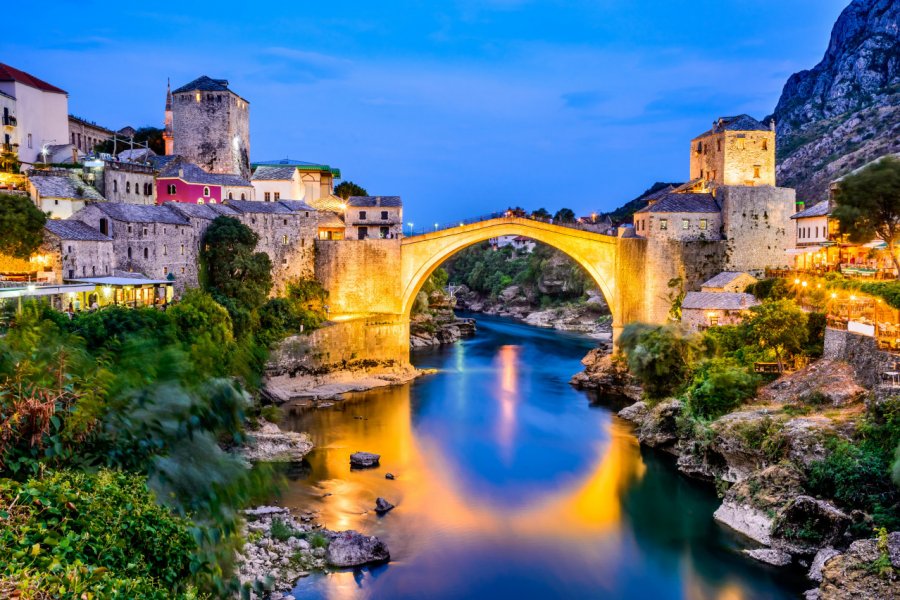Travel guide Bosnia And Herzegovina
Discover Bosnia-Herzegovina , with its rugged mountains, azure rivers and cities with a tumultuous past, and 10 good reasons to go. Looking for an off-the-beaten-track getaway? This country in the heart of the Balkans has just what you're looking for. This little-known jewel of Europe is a masterpiece for the traveler in search of authenticity. Sarajevo, the capital, is a melting pot of cultures, where minarets stand side by side with steeples. They describe a European history at the crossroads of worlds. Discover the best hotels and incredible restaurants. In Mostar, the Stari Most bridge is an eternal witness to the meeting of East and West. A marvel of Ottoman architecture, it seems to defy time and the elements. But Bosnia-Herzegovina is also dense forests, hidden waterfalls and picturesque villages, such as Počitelj. Nestled against a hill, its stone houses whisper of centuries of civilization. The Kravica waterfalls, a true haven of peace, will captivate you with their wild beauty. And the Sutjeska mountains, among the oldest in Europe, are perfect for hikers.
This tourist guide to Bosnia-Herzegovina invites you to enjoy a Ćevapi on a terrace in Banja Luka, explore the medieval remains of Jajce, or be surprised by the freshness of the Neum lakes on the thin strip of Adriatic coastline. And what about the culinary specialties? Oriental pastries compete with robust mountain dishes. Whether you're a history buff, a nature lover or simply eager to discover new things, Bosnia-Herzegovina is a destination that's sure to capture your adventurous heart. Embark on a memorable journey to a country where hospitality is second nature.
What to see, what to do Bosnia And Herzegovina?
-
Book an activity
-
Customized travel
- The most beautiful cities Bosnia And Herzegovina
When to go Bosnia And Herzegovina ?
When to go to Bosnia-Herzegovina?
Bosnia-Herzegovina lives to the rhythm of seasons rich in events. Discover the right time for you. Whether you visit this wonderful country in winter or summer, you'll be charmed by its characteristics.
January - February: these months are synonymous with cold in Bosnia-Herzegovina. The mountains are draped in white, offering opportunities for skiing, especially in Jahorina and Bjelašnica;
March - April: winter gives way to spring. It's an ideal time of year, especially in April, when the flora and fauna revive.
May - June: the best time to visit Bosnia-Herzegovina begins. Temperatures are mild, nature is in full bloom, and tourism is not yet at its peak. Perfect for hiking and exploring historic towns;
July - August: the height of summer! Sarajevo and Mostar are in full swing. Festivals such as the Sarajevo Film Festival are in full swing. Expect high temperatures, especially in Herzegovina. This is the high season, with slightly higher prices;
September - October: Autumn is another ideal time to discover the country. The forests turn gold and purple. Temperatures are pleasant, and there are fewer tourists;
November - December: winter sets in again. Sarajevo prepares for its Christmas markets, and the city takes on a fairytale atmosphere.
When to go to Bosnia-Herzegovina to avoid the crowds? Opt for the off-season months: May, June or September. If you're looking for festivals or carnivals, the month of July is rich in cultural events.
The best time to visit Bosnia-Herzegovina depends on what you're after. Whether you're looking for the thrill of winter sports in February or the serenity of the lakes in September, each month has its own particularity. So grab your calendar and mark the date of your next adventure on Bosnian soil!
Suggested addresses Bosnia And Herzegovina
Travel Bosnia And Herzegovina
-
Find a hotel
-
Car Rental
-
International e-SIM package
-
Find a local agency
Bosnia-Herzegovina is not very big, about the size of a French region, but it is very fragmented with mountains and winding roads that lengthen travel times. It is therefore necessary to try to make journeys that are not too long in order to leave time for visits, shopping, gastronomic discoveries, wine tasting, etc. You should also avoid traveling at the end of the day, as it gets dark quite early. Once this is taken into account, you will be able to go on a tour leaving some room for improvisation. The routes that we indicate here are simply "ideas", proposals. It is up to you to make them your own, to skip certain stages and concentrate on others according to your desires, your means and the time you have available. Let's remember that Mostar is the most beautiful city in the country and that Sarajevo is the most culturally rich.
Find unique Stay Offers with our Partners
How to go Bosnia And Herzegovina
How to go alone
Going alone in Bosnia-Herzegovina is a rewarding adventure for independent souls. The country is welcoming and relatively easy to get around. Before setting off, find out about the local areas and customs for a more immersive experience. Nevertheless, stay on the beaten track and be vigilant if you approach a high-risk area. Carry a reliable map and learn a few basic phrases in Bosnian. The transport system is reliable, but downloading a translation app is useful. Youth hostels and homestays offer unique opportunities to meet other travelers and locals. Always remember to respect local traditions, and don't broach controversial subjects (the 1992-95 war and Kosovo's independence).
Finally, enjoy the unique freedom of solo travel!
How to go on a tour
Organized travel to Bosnia-Herzegovina is an attractive option if you're looking for convenience and local expertise. Many agencies offer complete packages that include transport, accommodation and guided tours.
This option allows you to discover the country's typical hidden spots without logistical worries. It's even perfect for first-time visitors who want to immerse themselves in Bosnia-Herzegovina's diverse culture without having to plan every detail themselves.
How to get around
There are several options for getting around Bosnia-Herzegovina. Above all, stick to marked roads. Don't venture into areas where mines have remained since 1995, when the war ended (combat zones in Posavina). Buses are still the most common and economical way to criss-cross the country.
For greater freedom, consider renting a car: it allows you to explore more remote areas at your own pace. Roads are generally in good condition, but beware of winding mountain roads and harried drivers. Trains offer a picturesque alternative, even if the network is limited. And, whatever your choice, keep an eye out for the majestic scenery!
Featured articles Bosnia And Herzegovina
Discover Bosnia And Herzegovina
Pictures and images Bosnia And Herzegovina
The 12 keywords Bosnia And Herzegovina
1. #Alcohols

All communities, including Muslims, produce and consume alcohol. Rakija is a rather delicate brandy distilled everywhere. Wine comes mainly from Catholic or Orthodox winegrowers in Herzegovina. As for the beer, it knows today an embellishment with approximately 60 microbreweries throughout the country.
2. #Bosnians
All the inhabitants of the country are Bosnians, whether they are from Bosnia or Herzegovina, Bosnians (Muslims), Jews, Roma, Serbs (Orthodox Christians) or Croats (Catholic Christians). The Serbs and Croats of the country are called "Bosnian-Serbs" and "Bosnian-Croats" to distinguish them from the inhabitants of Serbia and Croatia.
3. #Ćevapi

These grilled meat rolls are the staple of street food served here and in most Balkan countries. They are usually a mixture of beef and lamb that is quite fatty and spongy in consistency. The ćevapi (pronounced "chevapi") are served hot with raw onions in a round loaf of bread(somun) as a sandwich.
4. #Flags
Each of the three large communities proudly displays a flag: the national flag of the Bosnians (blue background, yellow triangle and white stars), the flag of Serbia of the Bosnian-Serbs (red, blue, white stripes and double-headed eagle) and the flag of Croatia of the Bosnian-Croats (red, white, blue stripes and red and white checkerboard).
5. #War
The 1992-1995 conflict is still very present in people's minds and on the walls of many buildings riddled with impacts. It is also the one that caused the current division of the country between the communities. The subject is delicate to talk about, but it constantly comes up in conversations. The memory of the two world wars is also very vivid.
6. #Islam
About 51% of the population is Muslim. The Bosnians are the largest community and on the whole practice a "moderate" Islam (drinking alcohol, rarely veiled women, etc.). Christians, on the other hand, have a more conservative approach to religion, especially the Bosnian Serbs, who are very attached to Orthodoxy.
7. #Mountains
They are not very high, since the highest point, Mount Maglić, reaches only 2,386 m in altitude. But they cover 80% of the territory. Therefore, travel is often difficult. On the other hand, there are many ski resorts. The most important ones are those of the 1984 Winter Olympics, Jahorina and Bjelašnica, near Sarajevo.
8. #Bear
Bosnia and Herzegovina is home to the second largest population of brown bears in the Balkans after Romania, with about 1,000 living in the forests of the mountains and hills in the northern part. But their population is declining due to poaching, legal hunting, vehicle collisions and landmine explosions.
9. #Pilgrimages

In Herzegovina, the village of Međugorje attracts 2 million Catholics each year, making it the third largest pilgrimage site in Europe, after Fátima and Lourdes. In central Bosnia, meanwhile, Ajvatovica Rock is the second most visited Muslim pilgrimage site on the continent, after Mount Tomor in Albania.
10. #Polako
In local Slavic languages, it means "slowly" or "slowly". Bosnians will often answer you with this word, if you are in a hurry or nervous. You will also have to drive polako, as the roads are often narrow and winding, and the speed limit is often between 40 and 70 km/h.
11. #Stećci

These medieval tombs from the 12th-15th centuries are typical of Bosnia and Herzegovina. Their name is pronounced "stechsti" and is said stećak in the singular. There are about 60,000 in the country, compared to only 10,000 in the three neighboring countries. Since 2016, twenty-two Bosnian stećci necropolises have been listed as Unesco World Heritage Sites.
12. #Visits
When you find the door closed in front of small museums, churches or mosques, don't be discouraged: ask the neighbors, the monks or the passers-by with a smile. This is part of the charm of the country. It also allows you to meet the locals and to start a discussion with a few words of English, Italian or German.
You are from here, if...
You are a giant. Bosnians are among the tallest men in the world: 177.8 cm on average.
You have only one child. Bosnia-Herzegovina has the lowest fertility rate in the Balkans: 1.24 children/woman.
You go skiing after work. In this mountainous country, there are ski resorts almost everywhere and they are not expensive.
You park anywhere. Preferably in the right lane of the main streets.
You speak at least three languages. This is a well-known joke here, as the three "official languages" of the country are so similar.
You live on less than 600 €/month. The average monthly salary was 564 € in 2022.
You heat with wood. Even in the city.
You are "yougostalgic". In 2017, 77% of Bosnians said they regretted the disappearance of Yugoslavia. Including among the generations born after 1992.
You are not from here anymore. Almost half of the Bosnian population lives outside the country.

